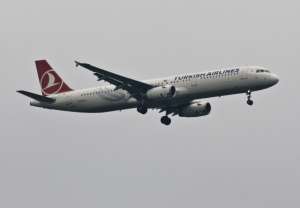(Interview with Adrian Popa, Area Head of Corporate & Regulatory Affairs, "British American Tobacco" South Eastern Europe Area)
Cosmina Capalău
Reporter: What is the BAT"s proposal concerning the increase of the minimum excise?
Adrian Popa: The discussions on the minimum excise and the structure of the cigarette excise have always sparked controversy, with every market player looking to defend their interests one way or another, especially through the press. As a compromise, let"s call it, which would make everybody happy, I would propose the passing of an Emergency Ordinance on July 1st, that"s somewhere in the middle of the April 1st - September 1st period, that would raise the minimum excise from 91% to 96-97%, and a second increase to 100% on January 1st, in order to avoid an abrupt transition.
Reporter: How does the tobacco excise system work?
Adrian Popa: I"m going to try and elaborate a bit on the structure of the excise and the minimum excise. It is already a known fact that in the European Union the cigarette excise has a mixed structure, meaning it includes a fixed tax levied in Euros/thousand cigarettes and another tax calculated as a percentage rate of the maximum price paid by the consumers (including VAT). Since April 1st, in Romania, the cigarette excise is 35.06 Euros/1000 cigarettes, with an additional 23% tax off the maximum price paid by the consumer.
If we look at the structure of the excise in the 27 EU member states, we will find that in Belgium, Italy, France, Spain, Austria and Bulgaria, the percentage part holds the biggest weight (exceeding 43%). The explanation is very simple: an excise that is predominantly "ad valorem" will cause large price differences between the "Premium" and "Low" segments, leading to an increase in sales for the low-priced segment. In other words, it stimulates high consumption at lower prices.
Why did it come to this? That"s simple, because the countries in question have delayed for a long time the privatization of their own producers/monopolies, and have tried to compensate for the lack of market efficiency of the monopolies in question through a distorted excise structure. It wasn"t even hard to do, as they were market players as well market regulators who had the power to decide on the structure of the excise ("Bulgar Tabac Holding", for instance, has yet to be privatized). You may remember the desperate arguments of the SNTR (Romanian State Tobacco Company) that were being conveyed in the press in 1999-2000, when the mixed excise was introduced in Romania. They very much resembled the ones that are being presented now. We know very well what happened - once the state privatized the SNTR, the Ministry of Finance built its excise policy around its budget revenue targets and the requirements of the EU, instead of trying to give its player an unfair advantage. Whereas SNTR"s market share used to be 100%, it is now less than 1%.
There are some rules in the EU concerning the cigarette excise, namely, when you"re looking at a EU market and you want to evaluate its excise, you can"t look at the entire portfolio and all the prices in the market, there is a reference level called the MPPC (ed. note: Most Popular Price Category) and which can be considered from several angles. In Romania, this category or reference level is the price at which you have the highest level of annual sales, because in Romania you have 30 different prices. In Romania, the reference price is found in the "Premium" category, which represents 40% of the total of sales. The target is set according to this reference level, namely, to quote Minister Pogea: "We will introduce the excise earlier, and raise it to 57 Euros in the first stage, and to 64 Euros starting September 1st". The 57 Euros refer to the MPPC, and in Romania, the largest sales are in the "Premium" segment.
Romania is one of the first countries that joined the EU after 2004 and where the MPPC is found in the "Premium" segment. That means the state is collecting an optimal amount of cigarette tax, which means it has a status which would have other EU states jealous. Because of the economic crisis, as well as to reach the minimum threshold imposed by the EU, prices will rise significantly in the coming period, and the Ministry of Finance has to take all the needed measures to avoid a drop of the MPPC to a lower reference price. If the price drops, the excise would be lower, meaning the difference would drop, instead of rising.
Reporter: How would the increase of the minimum excise affect the state budget? Same question for "BAT"?
Adrian Popa: The decision of the Ministry of Finance should not be made according to the names of the market players. They are competing on a market where consumers rule, and it"s the latter who decide what"s what. The current levels of the MPPC are the result of consumer decisions. Just for illustration purposes, let me paint a picture of the revenues that increasing the cigarette excise by 1% would bring to the Budget in this crisis period, when everyone"s hunting for cash, (its current level being 91% of the MPPC). Every 1% increase of the minimum excise means 22.2 million Euros a year in earnings. Because of our portfolio, we share interests with the Ministry of Finance. But as a player in the market, you can never say that raising the minimum excise is stupid. It"s the consumer who is king and it"s the consumer that affects competition, not the Ministry.
Reporter: If the increase of the excise were to have negative effects on one of the market players, what are the risks for the Ministry?
Adrian Popa: In times of crisis, with one of the players in the market not doing well, the Ministry of Finance needs to take some steps. There"s a very simple answer to what happens in a competitive market when there"s a crisis and a player isn"t doing well - price war. Whenever a price war happens, prices decrease, and if this happens, revenues drop as well, and the Ministry can"t afford that. The Ministry has to reduce the ability of the industry to wage a price war to a minimum. According to the law, the Tax Code, you are not allowed to sell at a price below the production costs. Therefore, if the minimum excise increases to 100%, the only place the price war is going to happen is on paper, there"s nothing left to do.
Reporter: How should the Ministry of Finance act in times of crisis to secure its revenues from excises?
Adrian Popa: The Ministry still has to avoid any negative price fluctuations, and last but not least it has to ensure a certain degree of predictability of cigarette excises revenues.
The only tools that the Ministry has on hand are the "minimum excise" and the "structure of the excise". Given these circumstances, there"s only conclusion to reach: the Ministry will make the decision with its own interests in mind, regardless of the interests or the names of the market players.















































